Dog Toothbrush - Most Important Things
03.11.2020.
Canine oral hygiene is an essential aspect of complete and healthy dog care. It is also a part that is usually overlooked, and some owners prefer leaving it to professional groomers or vets. The truth is - good oral hygiene is just as important for dogs as it is for us humans, and overlooking this type of care, can lead to serious health problems. Luckily, dog toothbrushes and toothpaste are available online and in your local pet shops.
Your dog having bad breath and yellow or brown teeth are not the only concerns you should have. Not taking care of your dog’s teeth can lead to liver, kidney, and heart diseases as well as dangerous infections. Dogs are luckily not as prone to cavities as we are, but that doesn’t mean you shouldn’t help them have healthy gums and teeth.
Signs your dog has dental problems
We all want what is best for our four-legged companions, so good oral hygiene should be necessary. Just like in humans, bad oral hygiene can lead to periodontal diseases and problems. Statistics show that most family dogs show signs of canine periodontal disease before they are three years old. As a dog owner, you should be aware of potential signs your dog has dental problems, and if you notice any of the following problems, contact your vet and ask about your next steps.
1. Bad breath
Bad breath is not something all dogs have. Sure, it is not fresh like your dog just walked out of a toothbrush commercial, but that doesn’t mean it should make you sick to smell it. Bad breath is usually an indicator of infections, bacteria, and plaque build-up. If this condition is left untreated, your dog’s teeth can be at risk of decaying.
2. Eating habits
Changes in your dog’s eating habits can indicate a large number of potential problems, and gum and teeth problems are one of them. It can mean your dog has a toothache or swollen gums that hurt when it eats.
3. Yellow teeth
Yellow teeth are a clear indicator of poor dental care - in dogs and humans. Yellow or brown markings on your dog’s teeth is usually a sign of plaque. Regular tooth brushing can prevent that, and it might be a good idea to call your vet and schedule a dental appointment.
4. Swollen gums
Extreme redness and even bleeding gums can be an indicator of infections and gum disease. Your dog will most likely start to drool excessively and start pawing at their mouth. That is a serious issue, and you should contact your vet for advice.
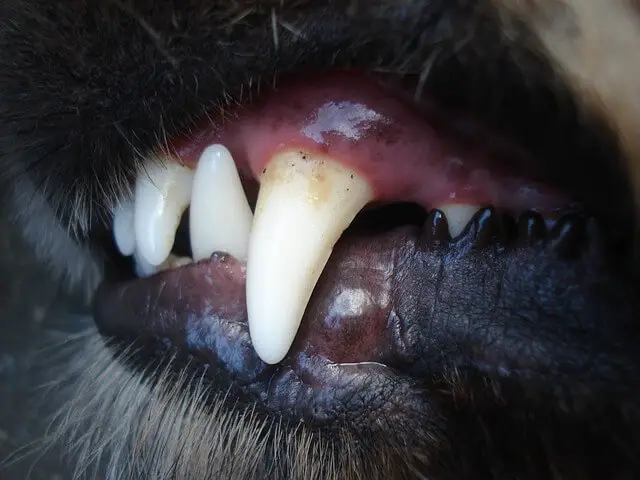
As we can clearly see, dog dental care is an essential aspect of a dog’s life, and you should keep a close eye on your dog’s teeth. Luckily, taking proper care of your dog’s teeth is not that hard!
Establishing a daily routine of brushing your dog’s teeth will help prevent any potential problems in the future, and there is a vast number of items you can buy that will make this part of your dog’s life a piece of cake.
How much does dog teeth cleaning cost?
If you decide to go to a vet for a dog dental appointment, it will cost you anywhere from 100 - 1000$. Your cost will vary on several things, and those things are; Anesthesia or anesthesia-free based teeth cleaning, necessary bloodwork, dog’s age, quality of teeth, additional procedures that will be required (root canals, extraction, etc.), medication, aftercare, and location. Vet costs are not the same in Los Angeles, Austin, New York, or Miami.
The best way to prevent having huge costs is - prevention. Taking care of your dog’s teeth can prevent any problems, and all you need is the right dog toothbrush, a dog toothpaste, and some patience.
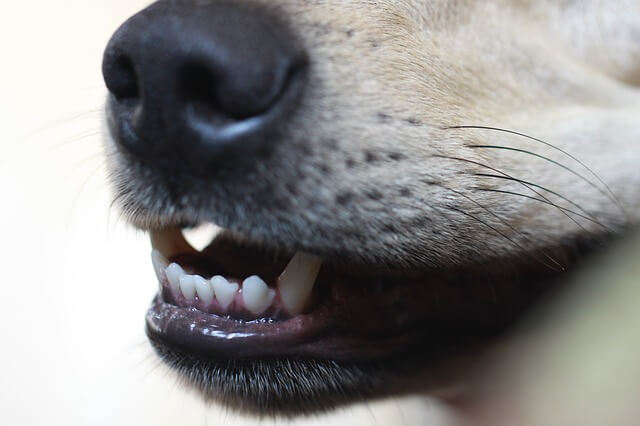
Dog teeth - basics
There is a big difference between our teeth and dog teeth, so here are the basics all dog owners should know.
1. How many teeth do dogs have?
Fully grown dogs in most species have 42 teeth. Their full sets of teeth consist of incisors (front teeth), canines (pointy teeth or “fangs”), premolars (located behind canines, used for shearing), and molars (in the back for grinding and chewing).
2. Do dogs have milk teeth?
Yes, dogs have milk teeth that are thinner and weaker. Their “baby teeth” start growing when the dog is about two weeks old and are fully formed around the 10th week of their life.
3. Do puppies lose teeth?
Yes, they do. Puppies start losing teeth when they are about four months old, and their permanent teeth start growing. First, they lose their incisors, then canines, premolar, and finally molars when they are 5-8 months old.
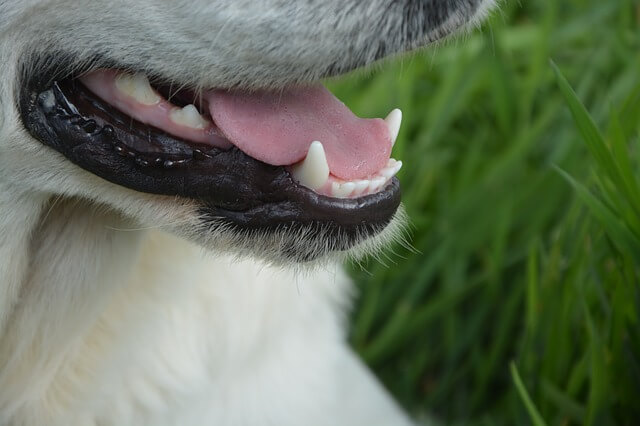
Dog toothbrushes
When it comes to dog toothbrushes, the choice is not as big as it is for us, but it is still pretty big and diverse. There are some basic things you will need to look for, and these things are; handle length and bristles.
If you have a larger dog, it would be a good idea to get a dog toothbrush with a longer handle. A longer handle will make it easier for you to reach your dog’s back teeth. There is also the option of having a two-sided dog toothbrush that is considered economical.
Bristles are also a vital part of a dog toothbrush, and you can choose from a wide variety. Bristles on a dog’s toothbrush are usually softer than humans. You should avoid using your old toothbrush for your dog because it can cause gum damage and bleeding. It would be a lot wiser to go for a toothbrush that was specially developed for dogs.
Dog toothpaste
Picking a dog toothpaste is just as important, if not more important, as choosing a dog toothbrush. As you can imagine, most dogs are not going to be delighted to start their new teeth brushing routine, and if you decide on a toothpaste whose taste your dog will enjoy, you can ease them into complying.
One thing you should always keep in mind - NEVER use human toothpaste to brush your dog’s teeth. Human toothpaste contains Flouride and a chemical called Xylitol (artificial sweetener). These chemicals are toxic for dogs, and even the tiniest of quantities can cause serious health problems, and in worst cases - death.
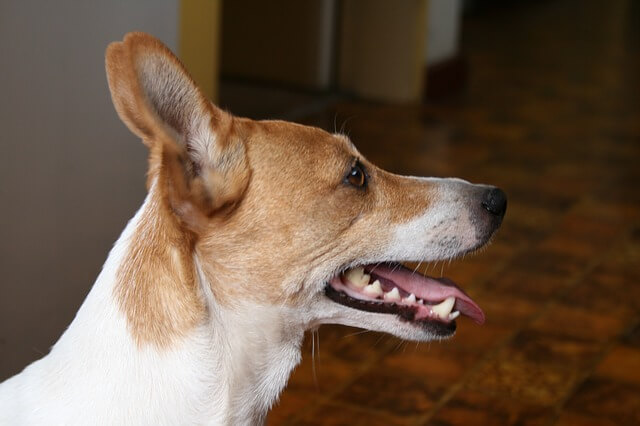
Most dogs enjoy the taste of dog toothpaste, which is a massive bonus for all dog owners who want to take proper dental care. However, there are also some tips and tricks for picking the best dog toothpaste for your dog.
There are two basic types of dog toothpaste - with scrubbing ingredients and dog toothpaste with enzymes.
1. Scrubbing dog toothpaste - Scrubbing ingredients are a vital part of dog toothpaste, and they help scrub away stains, food remains, and plaque off of your dog’s teeth.
2. Enzymatic dog toothpaste - As their name suggests, these types of dog toothpaste contain enzymes that destroy bacteria that cause tartar build-up and bad breath.
How to brush dogs teeth?
Just like we have to learn how to properly brush our teeth, as a dog owner, you should learn how to brush your dog’s teeth properly. Brushing your dog’s teeth can be a bit problematic initially, but if you follow these instructions, your dog will be a great “brusher” in no time.
1. Pick a time
Ideally, you should pick a time when your dog is the calmest and peaceful. You don’t want to handle a riled up dog’s teeth or if you haven’t been for a walk yet. Take your time and see what is a potential situation when your dog might accept this new routine.
2. Position
Choose a position that your dog will be comfortable in. Don’t corner your dog and pressure it. That will not be a good experience for your pup, and in the end, it might result in hating teeth brushing.
3. Test the gums
Before you start brushing, test your dog’s gums and teeth. Ideally, your dog should allow you to take their lips and expose their gums and teeth so you can feel them with your finger. It will also get your dog used to the feeling of something brushing or rubbing against their teeth.
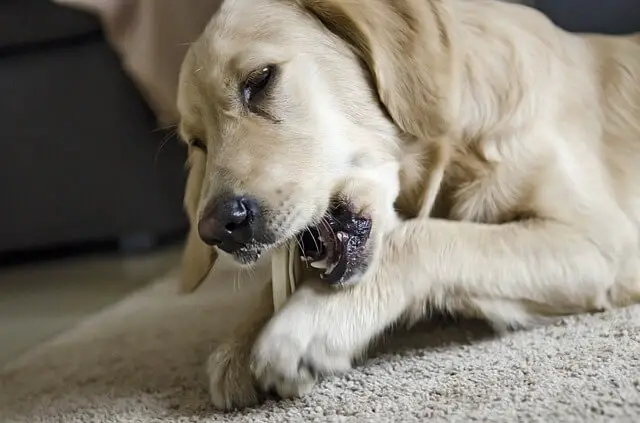
4. Toothpaste connoisseur
Allow your dog to taste the toothpaste first. Put some of it on your finger and allow your dog to lick it. See how your dog reacts, and that is a good indicator if you picked the right dog toothpaste flavor.
5. Test the toothbrush
After a while, your dog will get used to you touching their teeth as well as the taste of the toothpaste. Start introducing a toothbrush with the toothpaste. Place the toothbrush at a 45-degree angle so that the bristles can reach gums and scrub away the tartar, plaque, and food remains.
6. Circle motions
Just like humans, the proper way to brush your dog’s teeth is with a circular motion. That way, you will make sure you reach all parts of your dog’s teeth. Some bleeding may appear now and again, but it should not worry you too much. If heavy bleeding occurs, consult with your vet.
7. Scrub the plaque
Focus on the parts that have a lot of plaque. Canines and molars are usually the most affected so try focusing on them first.
Remember always to keep a positive environment and praise your dog while you are brushing their teeth. That is not a natural thing for them, and it might take some time to adjust to the new routine. Don’t get discouraged if you don’t get it right from the first time. Some of us tried for a long time to get our dog used to brush their teeth, and we are sure you can do it too!
Here is a list of dog dental care products we would recommend!
Great for all dog breeds, no matter the size. This silicone dog toothbrush can easily help you reach any part of your dog’s mouth, and tiny bristles are soft and completely safe to use. This is a great product that can last you up to 12 months.
This is an enzymatic dog toothpaste that has a poultry flavor that our dogs just adore. It helps reduce plaque and bacteria build-up, and the best thing is - it reduces bad breath. This dog toothpaste has a unique formula that doesn’t require rinsing.
World Dog Finder team

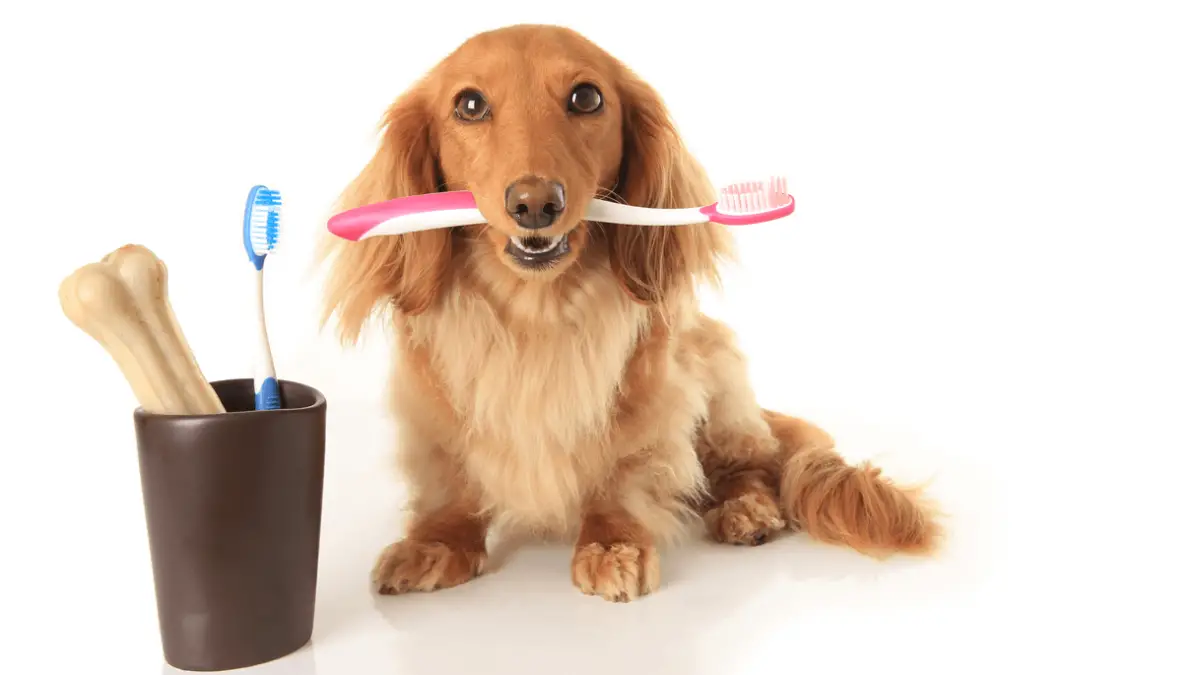





Share